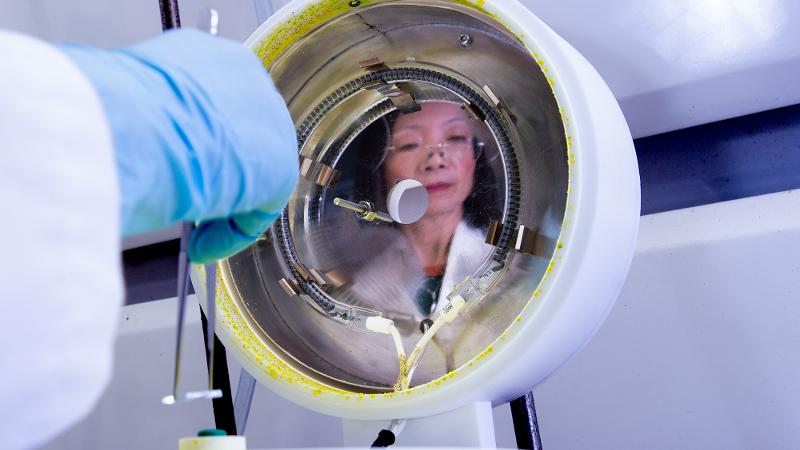Materials science is one of the most open-ended fields of discovery. As if to prove the point, researchers at Queensland University of Technology (QUT) have used human hair clippings sourced from a Brisbane barbershop to create carbon nanodots which were then incorporated into perovskite solar cells, where they’ve been found to confer an armour-like framework that supports greater stability and improved performance.
Professor Hongxia Wang, who led the group that recently published a paper on their findings in the Journal of Materials Science A, has been researching advanced solar cells for 20 years, and working with perovskite technology for about a decade.
Perovskites are widely considered the successor to today’s monocrystalline silicon solar cells. Their outstanding properties include the fact that they are lightweight and can be manufactured as a flexible film, suitable for a vast range of energy-generating applications, from clothing, to materials used in making tents, to powering spacecraft.
Towards solving the world’s energy challenges
Wang says the team’s ultimate aim is to make solar energy cheaper, easier to access and longer-lasting, thereby helping to cleanly deliver global energy needs.
The big challenges in the area of perovskite solar cells are improving stability of the device so that it’s “able to operate for 20 years or longer, and the development of a manufacturing method that is suitable for large-scale production”, she says.
Wang tried incorporating the carbon-dot solution out of “curiosity” after her colleague, Associate Professor Prashant Sonar of QUT’s Centre for Materials Science transformed hair clippings into carbon nanodots by breaking down the hairs and then burning them at 240 degrees Celsius … and subsequently used them to create flexible displays that may be used in future iterations of smart devices.
Capitalising on a chemical surprise
The effect on perovskite solar cells (PSCs) has been astounding. Wang’s team found that adding a toluene-based antisolvent containing carbon dots to the synthesis of perovskite film forms a two-layered chemical structure with a wave-like, textured perovskite layer on top of a dense perovskite counterpart, which enables reduced optical losses through light trapping.
The carbon dots form over and around the surface of the perovskite crystals to act as armour, such that the perovskite film shows “reduced density of interfacial defects, improved carrier recombination lifetime, better energy alignment with the adjacent hole transport layer and enhanced hydrophobicity”, says the paper’s abstract.
It concludes in summary that, “By leveraging these advantages to enhance the efficiency of PSCs, we have achieved a maximum power conversion efficiency of 20.22%, higher than 18.72% for PSCs without carbon dots, and the device stability is also significantly enhanced.”
The “armour” protects the perovskite material from moisture and other environmental factors which have previously been found to damage it; which has implications for the manufacture of perovskites.
Says Wang, “Currently, all the reported high-performance perovskite solar cells have been made in a controlled environment with extremely low levels of moisture and oxygen,” and producing very small cell areas which can’t feasibly be commercialised.
The “hairy” armour is a step towards better understanding how to protect perovskites in the conditions needed to enable large-scale production, and improve their stability over time.
This content is protected by copyright and may not be reused. If you want to cooperate with us and would like to reuse some of our content, please contact: editors@pv-magazine.com.









2 comments
By submitting this form you agree to pv magazine using your data for the purposes of publishing your comment.
Your personal data will only be disclosed or otherwise transmitted to third parties for the purposes of spam filtering or if this is necessary for technical maintenance of the website. Any other transfer to third parties will not take place unless this is justified on the basis of applicable data protection regulations or if pv magazine is legally obliged to do so.
You may revoke this consent at any time with effect for the future, in which case your personal data will be deleted immediately. Otherwise, your data will be deleted if pv magazine has processed your request or the purpose of data storage is fulfilled.
Further information on data privacy can be found in our Data Protection Policy.